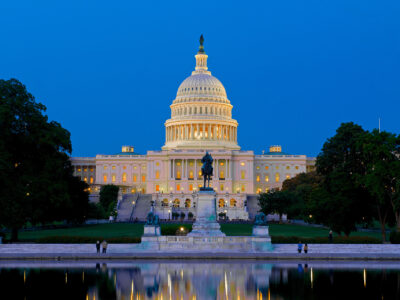The good run of outbound travel from India that has lasted over two decades could take a hit as the economic slowdown broadens. Yet, there is enough inertia in the market to drive it ahead.
The journey of Indian outbound travel market for over two decades has been a happy one. Indeed good enough to cause envy amongst most destinations. From a bare 4.42 million departures in the year 2000, over 26.30 million Indians took off on various foreign jaunts in 2018, having grown at nearly 10 pc over the previous year. The market is likely to have repeated the performance in 2019, despite some hiccups in the economy that had begun to emerge in the second half of the year.

Sri Lanka: The Emerald Island is becoming increasingly popular with Indian tourists
Though India is not yet amongst the top 10 source markets for many countries across the world, it is already the largest market for many of its neighbours including Bhutan, Nepal, Maldives and Sri Lanka. For many others including the UAE, Thailand and Malaysia it is rapidly emerging as one of the top five source markets globally.
Even for destinations further away such as Japan or South Korea or Australia as well as Europe, India is fast gaining traction as a strong market, even if with its own sets of expectations and complications. Japan National Tourism Organisation, for instance, has been aggressive in promoting the destination across the country, holding professional roadshows aimed at tour operators as well as social media campaigns targetting the individual travellers. One such campaign in early 2019 was focused on busting myths about Japan such as the absence of vegetarian and Indian cuisine in Japan or another about Japan being an expensive destination only for the super-rich.
Japan, which received barely 130,000 Indian tourists in 2018, hopes to double the number shortly, with a significant boost coming in the form of the Tokyo Olympics that would begin in July 2020. Already many tour operators have been offering dedicated circuits to Japan in the Indian market, expect the numbers to jump sharply this year in view of not just the Olympics but also a much better connectivity as the number of direct flights between India and Japan continue to rise each year.
One of the top outbound destinations from India, Thailand is already sitting on a pile of Indian tourists, but its appetite for more keeps on growing. Says Isra Stapanaseth, director (New Delhi), Tourism Authority of Thailand, ‘‘Thailand continues to be a very popular destination for Indian travellers and ranks number six in overall travellers to Thailand. As far as Indian tourist market is concerned from January to December 2019 we had about 1.9 million Indian tourists to Thailand giving us a phenomenal growth of around 18 pc over the same period last year. In 2020 we hope to achieve a target of over two million Indian tourists to Thailand. We also hope that Indians would travel to lesser-known destinations in Thailand and explore offbeat itineraries and experiences.’’
Thailand’s neighbour Malaysia is no less upbeat about the Indian market and its growing importance. ‘‘As of October, we continued to record growth in arrivals from this important market source. For the first 10 months of the year, we registered a 24.1 pc growth in terms of arrivals from India as compared to the same period of last year. We believe that in the remaining two months we will continue to experience growth in arrivals. We should be able to reach approximately 730,000 to 750,000 Indian tourists for 2019. We continue to be optimistic to see similar pattern for 2020. After all, we are tasked to attract a million Indian tourist arrivals for 2020,’’ says Sulaiman Suip, director (New Delhi), Tourism Malaysia.
‘‘We received excellent feedback from our efforts to promote Malaysia as a wedding destination. Just in the second half of this year, we managed to secure about seven important destination weddings in our country. More couples have already confirmed their weddings in Malaysia,’’ Suip adds.
Just a flight away
One way to guage the importance of a tourism market is the flight connectivity to and from the country. The last two decades have seen a sea change in the place of India in the global aviation scenario and the number of airlines flying into and out of the country. Each successive year has seen addition of new carriers flying into India or Indian carriers flying out to a new destination. The pace of additions of new airlines or new cities that are connected directly from an airport in India has accelerated sharply over the past 10 years, riding largely on the back of growing importance of India as a business destination as well as the source of tourists flying out.
The year 2019 alone saw the addition of direct flights between several airports sprinkled around the world, including Georgian capital Tbilisi, Jaffna and Batticaloa in Sri Lanka, Hanoi and Ho Chi Minh in Vietnam and Dushanbe in Tajikistan. In addition to that several overseas carriers began flying to newer points within India such as Delta starting daily direct flights to New York from Mumbai, United daily connecting San Francisco to Delhi, Japan Airlines starting Tokyo to Bengaluru and Lufthansa introducing Bengaluru-Munich flights.
In the months to come, the number of direct connections between newer airports in India to well-known cities as well flights from countries or airports not yet connected to India is set to increase at the same pace at least. Better connectivity is certain to drive growth in leisure and business traffic in both directions and will provide a further fillip to the rapidly growing outbound tourism flows from India.
Encouragingly, the year 2019 also saw the opening up of direct flights between India and Africa, one of the most important parts of the world that is extremely poorly serviced. In November, Air India began its flights to Kenyan capital Nairobi, while there are expectations of several African carriers to start their operations to India. South African Airways is also expected to return to India in the year 2020, while the largest African carrier, Ethiopian Airlines, that already added Bengaluru, in addition to its twice daily flights from Mumbai and New Delhi, is expected to add flights to India to cater to a rising demand for leisure and business travel from India.
However, some places saw a slow beginning in 2019 due to the exit of Jet Airways. “The peak season began on a slightly tumultuous note with the exit of Jet Airways from the Indian aviation industry which led to a reduction in the number of direct flights to Paris. This also did affect summer bookings. On the positive side, France registered an increase of 16 pc in the number of Indian arrivals. Also, our annual B2B offsite which took place at Mahabalipuram this September witnessed a record participation of 36 French tourism professionals buoyed to reinforce their presence in the Indian market. We had strong support from the trade as well with a presence of almost 80 key trade representatives from different parts of India,” Sheetal Munshaw, director, Atout France, tells India Outbound.

From Left: Delta is one of the several airlines operating new routes to India; Cities like Rome are becoming popular amongst Indian tourists; Destination wedding is a rapidly growing segment of outbound tourism market and more travellers are seeking out a cruise as part of their vacation
Weddings & MICE
One of the key travel segments that has caught on in a big manner in India over the past 15 years is MICE, as practically all companies – from hospitals and pharmaceuticals to automobile and cement makers have begun to pamper and incentivise their distributors and dealers by taking them on fully sponsored junkets overseas.
India is estimated to generate over two million outbound luxury and MICE tourists annually by 2020, reinforcing the country’s influence as a key source market for MICE and luxury travel, according to a report. The MICE travel market in India is expected to hit USD 9 billion (INR 630 billion) by the year 2025.
Destination weddings is yet another segment of outbound travel from India that will continue to grow strongly and many countries are already betting on presenting themselves as the ideal setting for the next Big Fat Indian wedding. With over 10 million weddings each year held in India, if even a small fraction of these are relocated to overseas, it could mean billions of dollars in revenues for the beneficiary destinations. This is not only due to the high number of weddings, but the relatively large budget for wedding set aside by an Indian family. It is estimated that wedding is the second biggest expense made by an average Indian, second only to buying a house. Some weddings cost as much as a fifth of the entire household saving.
Even a new entrant in the field, Azerbaijan in Eurasia is targetting weddings and MICE in India. ‘‘We actually had a few Indian weddings in Baku and several big MICE events, corporate events in the country. Riding on that experience, we are pushing on positioning ourselves as a great wedding destination as well as perfect venue for specialised events for the Indians. Presently, our strategy for India is to attract corporate, wedding and leisure travellers. Having a large outbound potential market, India is of high interest for the Azerbaijani DMCs, focused especially on attracting corporate and wedding travellers,’’ Florian Sengstschmid, CEO, Azerbaijan Tourism Board, tells India Outbound.
“The Indian outbound traveller is more and more attuned to the idea of experiential travel. This trend continues to be the mainstay of travel patterns seen while planning an overseas holiday. For France, we have seen an increase in thematic holidays that include self-drive escapades, winter breaks, travel around gastronomy and wine, shopping breaks etc. There is a gradual and positive increase in the number of nights that travellers are spending in France. More and more Indians prefer to now visit France as a solo destination with an average stay of eight nights that includes Paris and other destinations in France. Even for Paris, visitors are gradually moving away from classic experiences and opting for off-beat activities which is very encouraging,” says Munshaw.
Experience-based travel
One of the most important trends in the recent years in Indian travel industry is personalisation of travel. More and more travellers are seeking tailor-made and bespoke programmes and don’t mind shelling out a premium for a package made to order and suiting their demands and expectations.
Also, the Indian travellers are increasingly turning away from just sight seeing and moving towards experiential travel, not just in the familiar destinations like Europe or North America, but also in relatively unexplored countries like Jordan, Tunisia, Azerbaijan or Mexico. Another segment that is set to continue its recent boom is cruise tourism. After years of being an also-ran in the market, Indian travellers are emerging as a significant chunk of business for many cruise companies, operating not just in the vicinity but also literally across the seven seas. And many destinations are thrilled. For instance, Singapore is set to cross 200,000 mark in terms of number of Indian travellers taking a cruise having grown at a fast clip over the past three years.
According to experts cruise tourism boom will continue from India as only a fraction of Indian outbound visitors are currently using cruises. This could be mainly due to misperceptions about the price of a cruise as even experienced travellers believe cruises to be a luxury experience, out of their reach. However, Felix Chan, vice president of sales – Asia, Norwegian Cruise Line Holdings, a major cruise operator in Northern Europe says cruises in fact have much more value deals than land-based vacations.
At a conference in India, Chan highlighted two key aspects, value-adds and choices. “A lot of guests don’t care whether it is cruise vacations or land vacations. They care about if they want to go to a certain destination, at a certain budget, which form of vacation can offer them the best experience. Over the past three years, Northern Europe has become a very attractive cruising destination because the hotel, dining and transportation is expensive in the Indian market and in Asia. If you compare a cruising vacation to Northern Europe and are telling about having the same experience at much less total cost and value-adds, you will find great value. This is one of the most powerful ways to sell cruise vacations,” Chan says. He adds that another powerful message to boost cruise tourism from India is by informing the customers about the wide variety of options available, to fit all budgets and durations being sought by travellers. “A lot people in India and Asia have strong perception that there may not be many offerings on a cruise ship. We need to change that perception. Talk about the choices,” Chan says.
Uncertainty over economy
While everything else seems to be positive for the outbound tourism market to keep its growth rate, the only uncertainty could be the severe economic slowdown that gripped the country in 2019. At under 5 pc, the GDP is expected to clock its lowest growth in six years, many sectors have been in the vice-like grip of a severe contraction, notably automobiles, real estate, manufacturing, mining and power generation. The political turmoil over the Citizenship Amendment Act that has gripped the entire country since December can only add to the uncertainty over the direction the Indian economy will take in the year 2020.
There are already troubling signs of the slowdown hitting the tourism sector as well. Hotels in Goa are normally overbooked in December, but this year there has been a sharp drop, nearly 30 pc, in arrivals of both overseas and domestic travellers. The airlines, too, are feeling the pinch as the Indian civil aviation market, which had been the fastest growing in the world for the past decade, registered its first contraction in nearly two decades as business and leisure air travel took a hit.
The overseas travel seems to have escaped the axe, so far. Many destinations believe that the market is large enough and the mix of travellers broad enough to cushion against any downturn. Nishant Kashikar, country manager – India & Gulf, Tourism Australia, is one. “A forward-booking trend and based on our arrivals data, we should continue to see a healthy double-digit growth in visitation from India to Australia,’’ Kashikar told an Indian media.
“2019 has been a Grand Cru vintage in terms of challenges. However, with the shift in mindset over the last few years where travel has become a way of life and is no longer a luxury for the Indian globetrotters, we are hopeful that the resilience and wanderlust in India will enable us to stay stable if not augment our tourism footprint ex India. We are confident that France will continue to be on the bucket-list of Indian travellers for the coming year. Over the last few years, we have registered a consistent annual growth of 10-15 pc in the influx of Indians coming to our shores. For 2020, our focus will also be to showcase Reunion Island as part of our alliance with the Tourism Board since October 2018. Weddings will continue to be a key focus area for us in addition to accentuating our areas of excellence and signature tourism brands through all our marketing and communication campaigns with a concerted focus on digital marketing,” adds Munshaw.
Tourism Malaysia’s Sulaiman Suip dismisses worries about the economic slowdown in India and the impact that it may have on travel to Malaysia. ‘‘What economic slowdown! India’s economy is too big for us to feel anything. We are seeing positive signs in the market. There is a surge in visitors from Tier II and Tier III cities and they will continue to lead the way in 2020,’’ he tells India Outbound optimistically. Amen to that…
Published in India Outbound, January 2020























